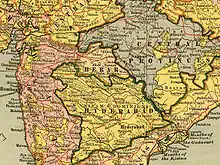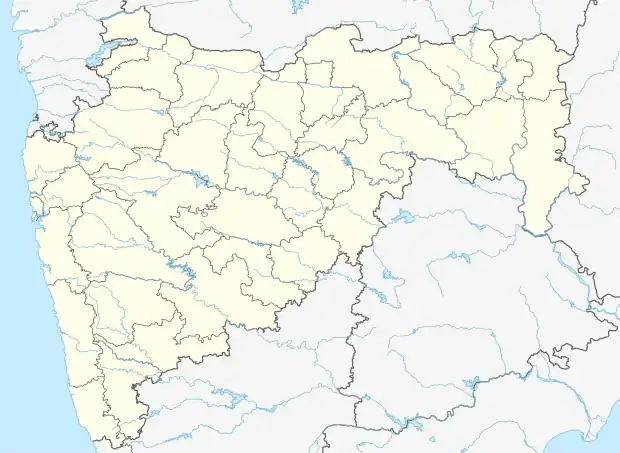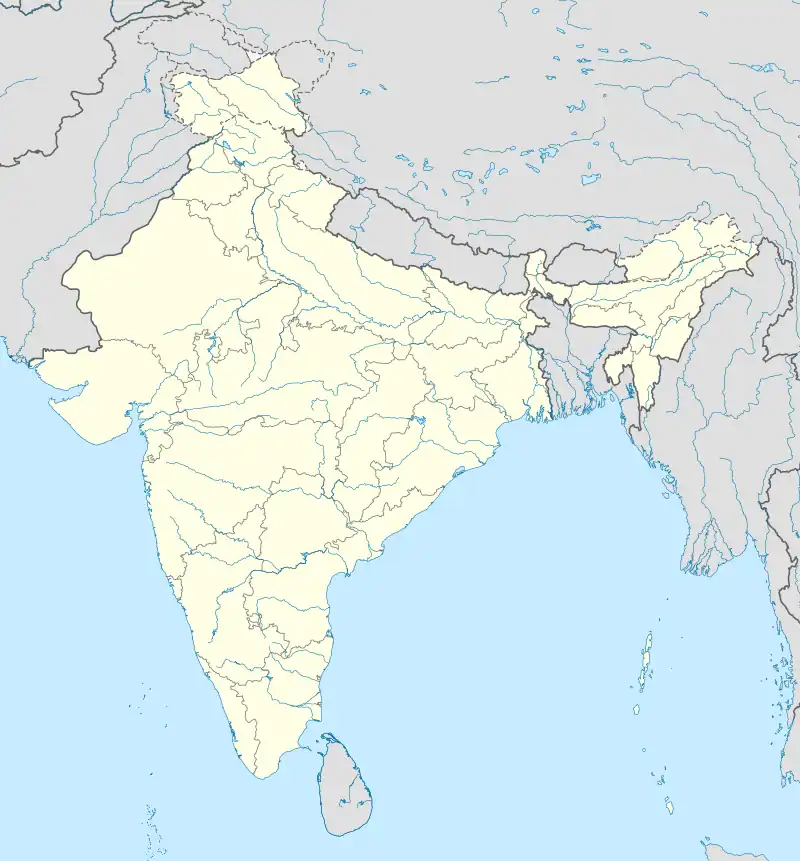| Gajapati invasion of Berar (1461) | |||||||||
|---|---|---|---|---|---|---|---|---|---|
| Part of Bahmani-Gajapati conflicts | |||||||||
 The Berar region | |||||||||
| |||||||||
| Belligerents | |||||||||
| Bahmani Sultanate |
Gajapati Empire Kakatiya chiefs | ||||||||
| Commanders and leaders | |||||||||
| Muhibullah |
Kapilendra Deva | ||||||||
| Strength | |||||||||
| 160 horsemen |
| ||||||||
| Casualties and losses | |||||||||
| ~~unknown~~ | 2000-3000 soldiers killed | ||||||||
 Location within Maharashtra  Gajapati invasion of Berar (India) | |||||||||
The Gajapati invasion of Berar in 1461 was a significant military expedition by Kapilendra Deva of the Gajapati Empire against the Bahmani Sultanate. This event unfolded in the aftermath of Humayun Shah Bahmani's demise and the subsequent ascent of Nizam Shah Bahmani to the throne. The primary objective of the campaign was to seize Berar, the present-day region of Maharashtra. Backed by Kakatiya chiefs, the Gajapati forces engaged in a decisive conflict with the Bahmani forces led by Muhibullah. The outcome saw the defeat of the Gajapatis, compelling the surrender of Kapilendra.
Background
Kapilendra Deva established the Gajapati Empire in Odisha in the year 1434.[1] He waged wars against the neighboring Bahmani and Vijayanagar Kingdoms. Kapilendra invaded the territories of the Bahmani Dynasty during the reign of Sultan Humayun Shah, who passed away in 1461. Nizam Shah Bahmani, the eight-year-old son of Humayun Shah, succeeded him to the throne.[2][3]
Kapilendra perceived this as an opportunity to invade the Bahmani Dynasty, thinking it would be easier to capture its capital due to their minor ruler. Nevertheless, Khwaja-i-Jahan, was the regent ruler and Mahmud Gawan was the Vizier of the Bahmanis.[4][5]
The campaign
In 1461, Kapilendra led a march towards Berar with the backing of Kakatiya chiefs and the Zamindars of Telengana to invade the Bahmani Dynasty. He pillaged the regions and progressed toward the Bahmani capital.[6] The Gajapati forces, comprising 10,000 men and 400 horses, faced opposition from the Bahmani chiefs who sent a contingent of 160 horsemen led by Muhibullah, the son of Khalilullah, a recognized Ghazi. Muhibullah marched against the Gajapatis, leading to a military conflict. The outcome favored the Bahmanis, as the Gajapati forces under Kapilendra retreated from the battlefield.[5][7] Believing that the entire Bahmani army was mobilizing, the Gajapatis left their heavy baggage on the field and sought refuge in a fort.[6][8]
Firishta documents the message from the Bahmani chief to Kapilendra as follows:
"This king of ours, with his youthful good fortune, has been wishing to march with an army to the lands of Odissa, Oriya and Jajnagar in order to conquer them. It is good that you have simplified our work by coming here yourself. Now understand definitely that unless you promise to pay a tribute and unless you return all the money you have seized from the land of the Musalmans, not one of your men will be able to go back alive."[5]
— Firishta
The Gajapatis lost two to three thousand men.[8] Kapilendra, in a gesture of submission, paid tribute to the Bahmanis by surrendering twenty-five elephants and a substantial amount of gold and silver to secure his life. Since this conflict, Kapilendra Deva never invaded Bahmani territories again.[9]
References
- ↑ Panda, Shishir Kumar (2008). "Gajapati Kingship and the Cult of Jagannatha: A Study on the Chhamu Chitaus (royal Letters)". Proceedings of the Indian History Congress. 69: 225–229. ISSN 2249-1937.
- ↑ Mahtab, Harekrushna (1959). The History of Orissa. Prajatantra Prachar Samity. pp. 313–316.
- ↑ Sandhu, Gurcharn Singh (2003). A Military History of Medieval India. Vision Books. p. 366. ISBN 978-81-7094-525-3.
- ↑ Chandra, Satish (2007). History of Medieval India: 800-1700. Orient BlackSwan. ISBN 978-81-250-3226-7.
- 1 2 3 A Comprehensive History of India: The Delhi Sultanat (A.D. 1206-1526), ed. by Mohammad Habib and Khaliq Ahmad Nizami. People's Publishing House. 1970. pp. 950–951.
- 1 2 Haque, Mohammed Anwarul (1980). Muslim Administration in Orissa, 1568-1751 A.D. Punthi Pustak. p. 34.
- ↑ Mukherjee, Prabhat (1981). The History of the Gajapati Kings of Orissa and Their Successors. Kitab Mahal. p. 135.
- 1 2 Subrahmanyam, R. (1957). The Sūryavaṁśi Gajapatis of Orissa. Andhra University. p. 56.
- ↑ Sahu, N. K. (1980). A History of Orissa. Bharatiya Publishing House. p. 244.